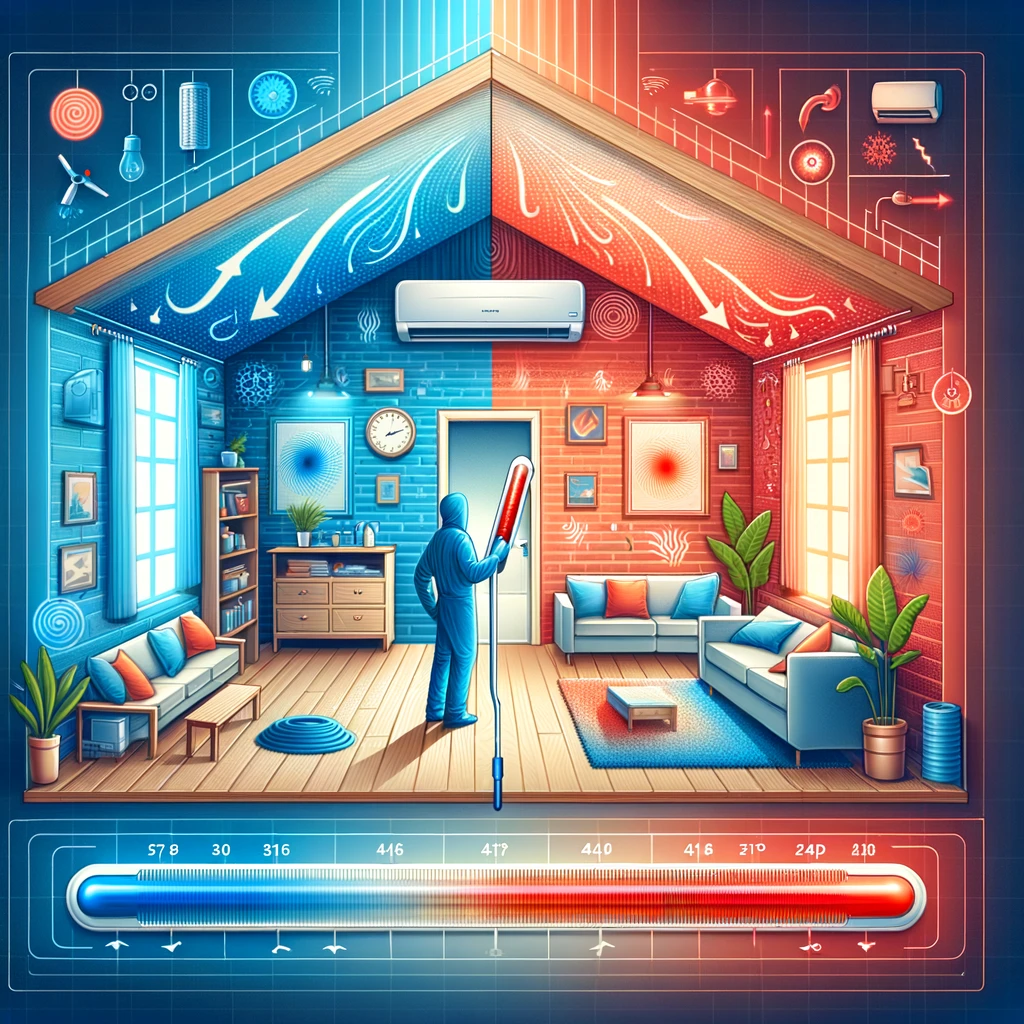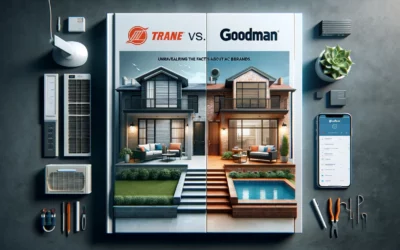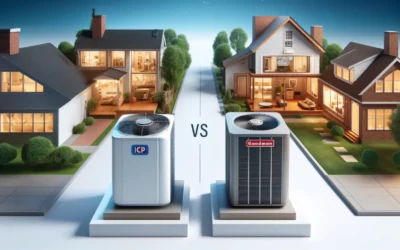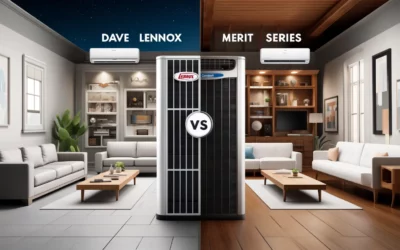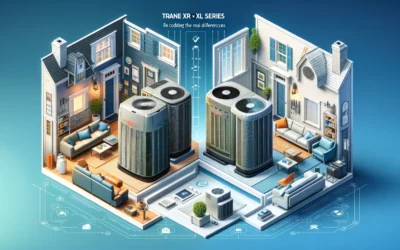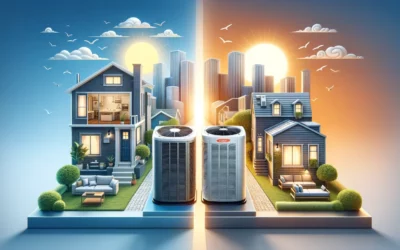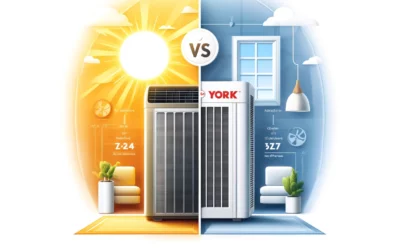Welcome to our latest post, “Unraveling the Mystery: Why Your AC Creates Hot and Cold Spots.” Does your air conditioning system create inconsistent temperatures throughout your home? If so, this educational, fact-based post will provide you with expert analysis and help you understand the root cause. Just like an elusive puzzle, it’s time to put all the pieces together to solve this common household dilemma. The principles and advice you’ll discover here could not only make your home more comfortable, but also help your AC system run more efficiently. By the end of this post, the mystery of your AC’s hot and cold spots will be a thing of the past. Dive in to discover practical solutions to a problem many homeowners face. This informative and easy-to-understand guide will prove to be a valuable resource for you.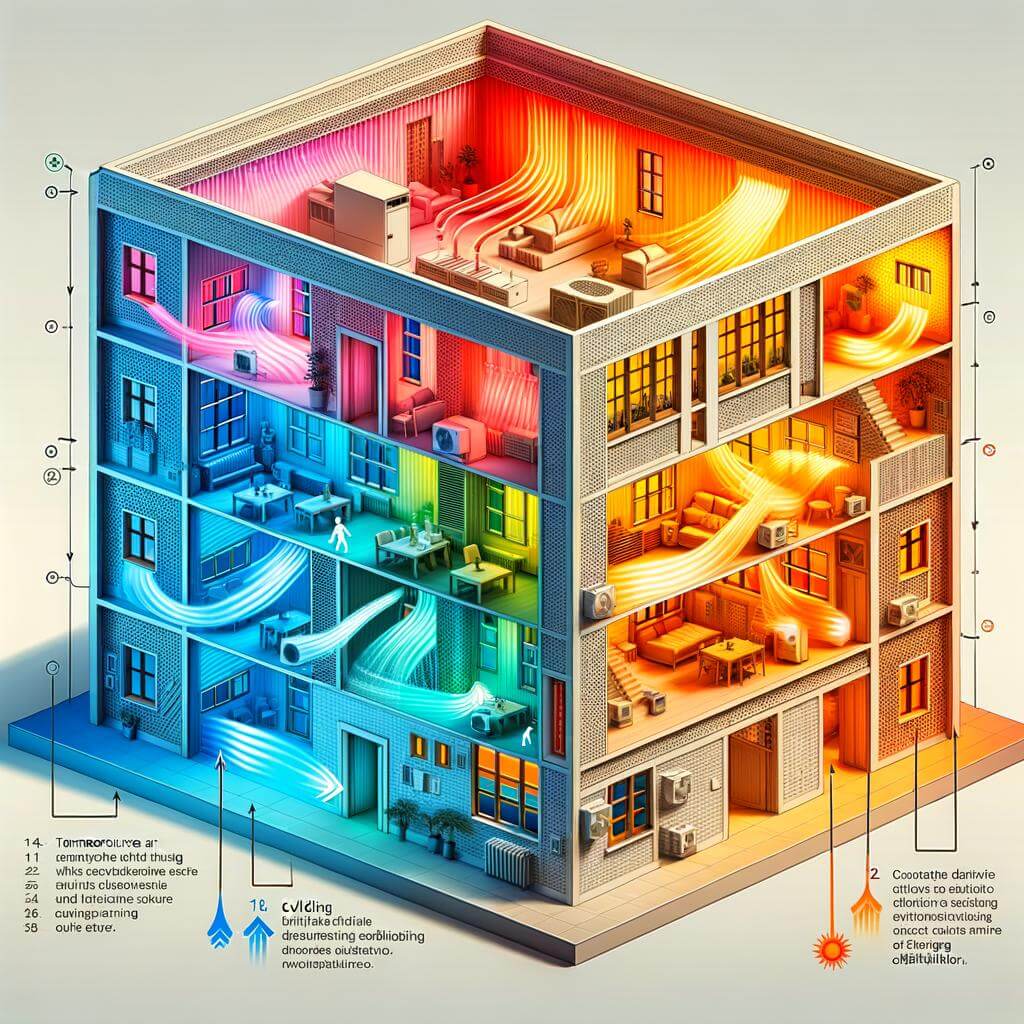
Understanding the Dilemma: How AC Systems Create Temperature Imbalances
Have you ever noticed uneven cooling in your home on a hot day, with some rooms feeling uncomfortably hot while others are freezing cold? While air conditioning systems are designed to cool your home, sometimes they can inadvertently create a temperature imbalance. This is commonly caused by two main factors: unequal distribution of air and insufficient insulation.
The unequal distribution of air can occur when the ductwork is poorly designed or clogged with dirt and debris. Rooms further away from the cooling unit may receive less cooled air, making them warmer than the rest. Additionally, if your AC’s fans are not powerful enough to distribute the air evenly, you may find hot spots in your home. On the other hand, insufficient insulation can allow the cool air to escape from certain parts of your home faster than others, creating cold spots.
- Unequal Air Distribution: Poorly designed or clogged ductwork, weak fans.
- Insufficient Insulation: Easily escapes cooled air, leading to cold spots.
| Parameter | Details |
|---|---|
| Unequal Air Distribution | Poorly designed or clogged ductwork, weak fans |
| Insufficient Insulation | Easily escapes cooled air, leading to cold spots |
Understanding these factors can help you address the temperature imbalances in your home. To resolve unequal air distribution, you can hire professionals to clean and maintain your ductwork or install more powerful fans in your AC unit. If insulation is the culprit, consider getting an insulation upgrade for your home to keep the cool air in and the hot air out.

How AC System Size Contributes to Hot and Cold Spots
A crucial factor that can significantly influence the formation of hot and cold spots in your home is related to the size of your AC system. When choosing an air conditioning unit, the sizing ought to be just right for your space. A system that’s either too big or too small can result in uneven cooling and ultimately create those unwelcome temperature inconsistencies. An AC that’s too small will struggle to evenly cool your property and may result in hot spots, whereas an overlarge one may provide too much cold air, causing uncomfortable cold spots.
Following are the ways how the AC system size significantly impacts these temperature disparities:
-
Short Cycling:
An AC that’s larger than recommended will cool your home too quickly, i.e., it “short cycles”. It turns off before properly circulating conditioned air throughout your home, leading to cold spots especially near the AC unit and hot spots elsewhere.
-
Inadequate Dehumidification:
Bigger units fail to control humidity efficiently, which is crucial for comprehensive cooling. Inefficient dehumidification can make certain areas feel warmer than others, leading to a sense of hot spots.
-
Strain on the System:
If the AC unit is too small, it will struggle to cool your home on hot summer days. It will need to run continuously, putting a strain on the system, and can lead to inconsistent temperatures throughout your house.
In addition to this, consider that different rooms have varying cooling requirements. If your AC’s size doesn’t take this into account, the result will be uneven cooling.
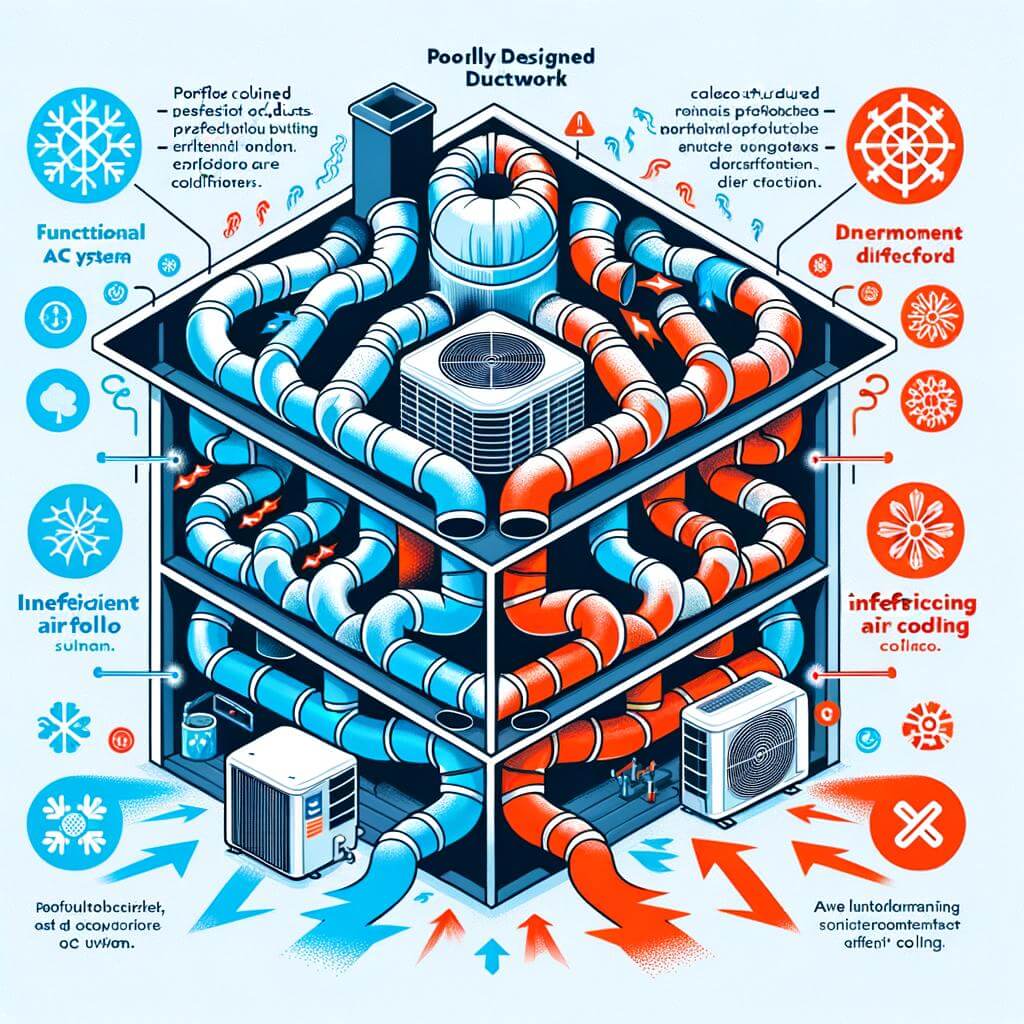
The Impact of Poorly Designed Ductwork on Your AC’s Performance
Not many are aware, but it’s indeed true – the performance of your air conditioning hinges heavily upon the structure and quality of your ductwork. Any flaw in the design or improper installation can lead to uneven temperature distribution, causing your system to function inefficiently and escalate your energy bills. For instance, ducts that are too small curb the airflow, forcing your cooling unit to work overtime, while those too big fail to sustain the required airflow velocity, which dampens the cooling efficacy. Common flaws in ductwork that jeopardize your AC’s effectiveness include:
- Incorrect sizing
- Poor sealing or leakage points
- Insufficient amount of supply and return vents
- Improper insulation
Now, addressing these duct-related issues can dramatically turn the tables. You’ll observe a noticeable improvement in your AC’s performance, energy optimization, and overall home comfort. Additionally, strategic positioning of your ductwork plays a crucial role; it should be designed to evenly distribute the conditioned air throughout your space, preventing any hot and cold spots. Patchy comfort zones can detract from the efficiency of your air conditioning system. Let’s take a look at how poor ductwork design can negatively influence the performance of your AC system:
| Aspect | Effect of poor ductwork design |
|---|---|
| Energy Efficiency | Creates inefficiencies leading to higher energy consumption |
| Performance | Adversely affects the cooling/heating outcomes; increases the mechanical strain |
| Comfort | Induces uneven temperature distribution; contributes to hot or cold spots |
Ignoring your home’s ductwork while attending to your air conditioner’s upkeep may appear like an oversight, however, it’s one that can cost you dearly. For a complete preventive maintenance check, it is important to inspect your ductwork. Remember, a contingency left unattended might lead to an expensive repair down the line.
Avoiding Hot and Cold Spots: The Role of Proper AC Installation
Air conditioners are fantastic devices that have made the scorching summer months much easier to bear. However, a common annoyance many homeowners face is the presence of hot and cold spots throughout their home, even when the AC is running. These temperature inconsistencies can throw off the comfort level in your living environment and are often due to improper air conditioning (AC) unit installation. Let us delve into this issue and see how proper AC installation can prevent these hot and cold spots. To put it simply, uneven cooling often boils down to two main issues. The first revolves around the AC unit itself, namely the size, power, and its installation. Surprisingly, an AC unit that is too powerful for your home can cool certain areas too quickly, leading to cool spots, while areas farther away from the unit become hot spots. On the other hand, a unit that lacks the necessary power will struggle to cool your entire home evenly, also resulting in uneven temperatures. The positioning of your AC unit during installation is key to prevent such scenarios. Professionals suggest that the unit should typically be located in a central area, allowing for an even distribution of cool air.
| AC Size | Should be apt for your house size |
| AC Power | Should be capable enough to cool the entire space |
| AC Position | Should be centrally located |
The second issue has more to do with the layout of your home and the distribution of your ductwork. The length, size, location, and condition of your ductwork could significantly impact the cooling of your home. If it’s not correctly designed to accommodate your home’s layout or has damages, it could lead to hot and cold spots. To combat this, it’s crucial to have an efficient ductwork design with fewer turns and bends that allows for smoother airflow.
- Inadequate Ductwork – could reduce the efficiency of your AC
- Limited Airflow – can be caused by poorly positioned ducts
- Obstructed Paths - furniture or other obstacles can block air from freely flowing out of vents
Each home is unique and thereby may require a tailored approach when resolving these AC issues. Therefore, to avoid the unnecessary frustration of hot and cold spots, it is always recommended to involve a professional during installation and design for a consistently comfortable living environment.
Insights from HVAC Experts: How to Rectify and Prevent Uneven Cooling
Understanding the Root of the Problem
Uneven cooling arises because of multiple complex factors. The most common causes include faulty ductwork, an improperly sized HVAC system, and obstruction in air vents. When ducts have leaks or are blocked, they restrict the airflow, resulting in certain rooms getting less cool air. An HVAC system that’s too small for the property won’t provide sufficient cooling, and likewise, a system that’s too large will cycle on and off too quickly, not providing uniform cooling across all areas. Finally, any obstruction in the air vents restricts the flow of cool air, leading to uneven cooling.
Solving and Preventing Uneven Cooling
Identifying the cause of the problem is the first step in rectifying uneven air conditioning. Reach out to a certified HVAC professional to inspect your system if this is beyond your technical ability. First, solution includes sealing and insulating the ductwork will help in avoiding unnecessary loss of cool air. Second, if the HVAC system is inappropriate for the space, discuss with your service professional about potentially replacing it with a system that suits the property size.
Strategies Brief Explanation Clean air vents Ensure that air vents are clear of any obstructions, such as furniture or drapes. Use window treatments Utilize energy-efficient window treatments to aid in maintaining a consistent indoor temperature. Invest in a zoning system To more effectively control temperature in different areas, consider installing a zoning system. Following these strategies will go a long way in rectifying and preventing uneven cooling in your property.
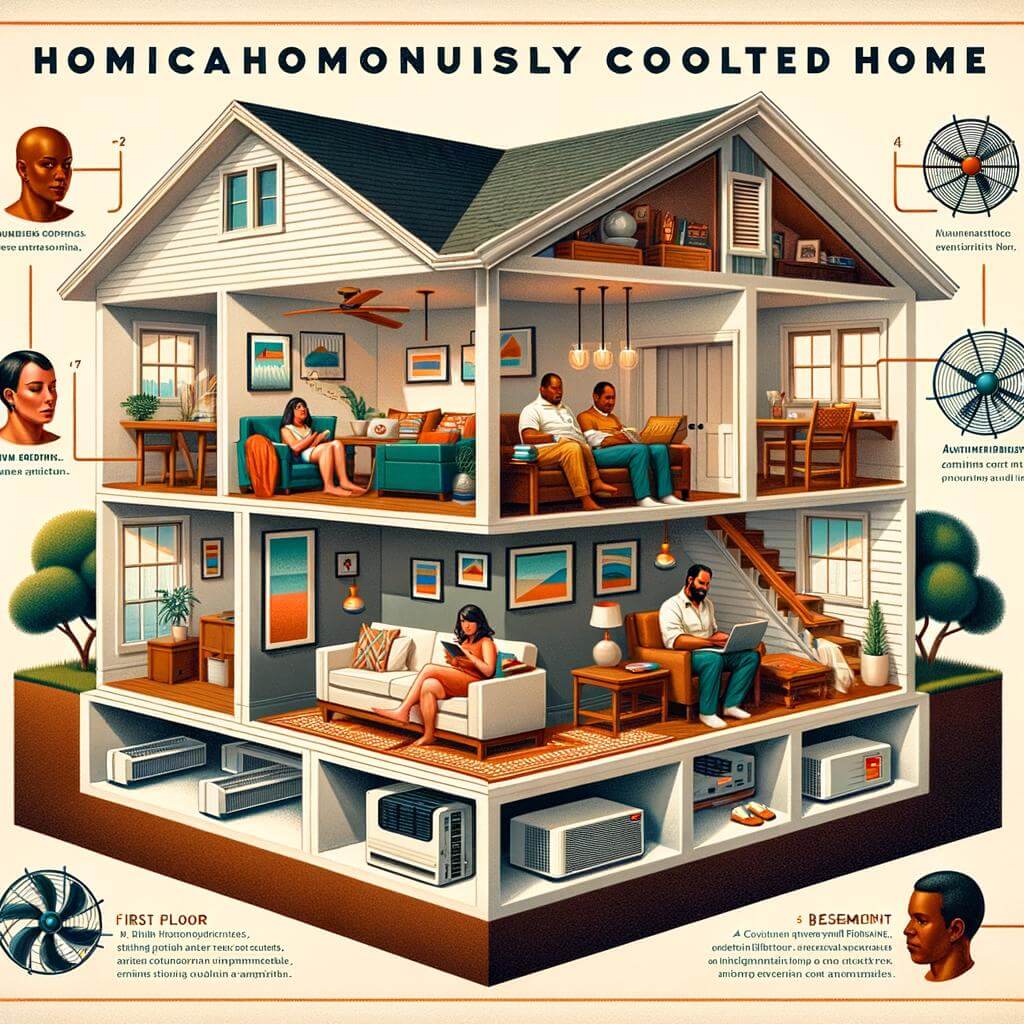
Practical Recommendations for a Homogenously Cooled Home
Experiencing inconsistent room temperatures in different areas of your home can be annoying. Even with an air conditioning system, you might often find that some spaces in your home cooler or warmer than others. This may seem like a puzzling mystery but factors that influence this include heat-generating appliances, room insulation, duct design, and thermostat placement. Fortunately, following these practical recommendations can help achieve a more homogenously cooled home.
Thermostat Placement: Your thermostat ought to be positioned in a central space, away from direct sunlight or heat-producing appliances like an oven or refrigerator. This optimal placement enables it to accurately read the average temperature of your home. Think of the thermostat location as the captain’s deck for your AC; it shouldn’t be impaired by factors such as heat sources or drafts that may skew readings.
- Room Insulation: No matter how efficient your HVAC system is, if your home is poorly insulated, cooling will escape leaving you with inconsistent temperatures. Proper insulation not only lays a blanket of cool air but also saves on energy costs.
- Duct Design: Your duct system plays a pivotal role in distributing cool air across your home. Make sure the ducts are properly sealed to avoid air loss. Regular maintenance can help ensure optimal performance and more even cooling.
- Heat-Generating Appliances: Appliances that generate heat, such as ovens and computers, can affect nearby room temperatures. To counter this, try to isolate these appliances from the rest of the house where possible.
Below is a simple comparison table of these solutions and how they influence achieving a homogeneously cooled home.
| Solution | Relevance |
|---|---|
| Thermostat Placement | Affects accurate temperature reading |
| Room Insulation | Ensures maintained cool temperature |
| Duct Design | Influences air distribution |
| Heat-Generating Appliances | Can increase room temperature |
With these considerations in mind, you should successfully demystify the uneven cooling in your home, promoting a more even, comfortable, and energy-efficient environment.
Closing Remarks
In conclusion, the existence of hot and cold spots in your home should not be overlooked. It’s not just about comfort; it’s also about the efficiency and lifespan of your cooling system. We hope this article has provided you with some valuable insights into why your air conditioning may be creating hot and cold spots in your home and what you can do to solve this issue. Remember, often, it revolves around simple factors like insulation, ductwork, and the right AC size. However, if the problem persists, it might be worth considering professional services. Use this knowledge to your benefit, and you will not only bring harmony to your room temperature but also save money and energy. Take control, investigate, and keep enjoying the soothing coolness of your AC without any unwelcome surprises.

